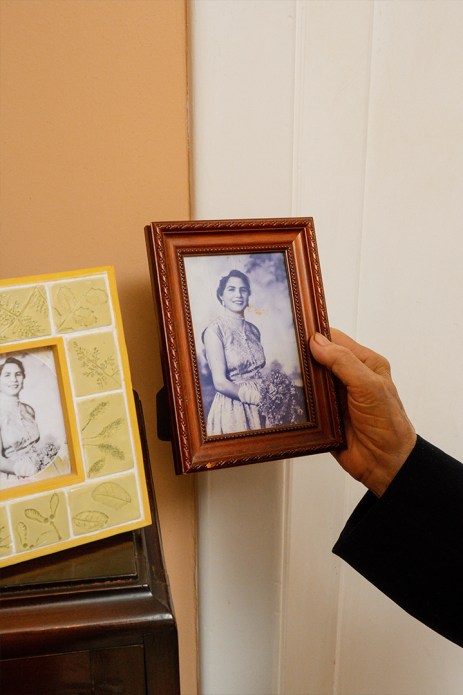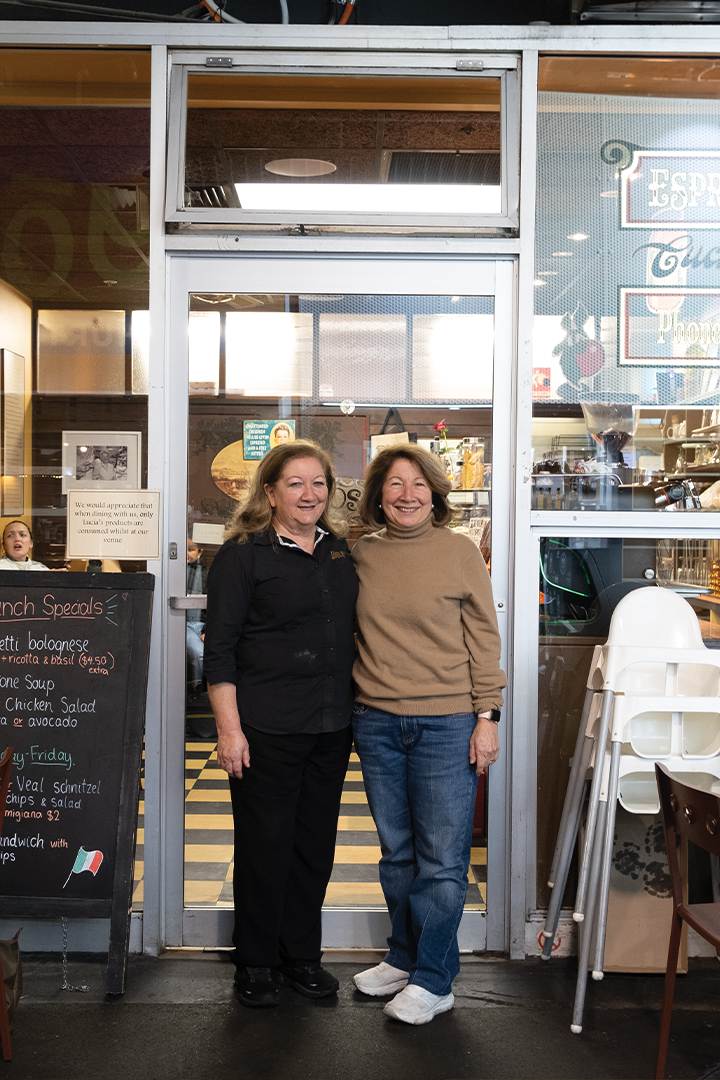Buon appetito! Celebrating our Italian food culture

When Italians migrated from their regions to Adelaide, the local food scene was… shall we say… bland. CityMag asks about their experiences and how homeland culinary traditions live on.
WARNING: The following story was written with the help of Fulvia Caruso (or Zia Fulvia, as Zia is Italian for aunty), an 84-year-old Italian woman, so parts may be slightly exaggerated, in another time-honoured Italian tradition.
When this reporter finally convinces her Zia Fulvia to sit down for an interview, it’s done over a plate of homemade gnocchi. Relatives hover close by to assist in translating the Pesco – a region in Naples – dialect to English, and they can’t help but put their two cents in.
“Hurry up! Do you know?” Zia Fulvia’s niece, Rossana Russo, says to her.
Zia Fulvia replies by yelling something in Italian.
“That’s what I asked you, and you said you were here before he was born. So when you came here, how old was Romeo?” Rossana replies, but louder.
“Six months,” Zia Fulvia says.
“Okay, so she came in 1956 because Romeo was born in ‘56 of March, and she came at the end of ‘56. So, start again,” Rossana says.
All we asked was what year Zia Fulvia migrated from Italy to Australia. We have our work cut out for us.


Zia Fulvia has always been the chef of the family. Every gathering involved the entire family surrounding her dinner table, her famous lasagne in hand and a packet of Briscola cards nearby.
But Zia Fulvia first learnt to cook when she was a young girl “because my house, all the certain people in Pesco used to come”.
“Then when I come to Australia, I start to do the same things – I start to cook, this and that,” she says.
Zia Fulvia says her mother “was a queen”, so instead, she taught herself how to cook. When she moved to Adelaide at 15, she became the family’s unofficial head chef.
“And because she’s a control freak, she’d have to do everything,” Rossana says, as Zia Fulvia frowns.
But Zia Fulvia was always the host, for everything.
You might like
“Matriarca,” Zia Fulvia says.
“Grandmother was here [in this house], and in Italian culture, the matriarch keeps the family together, and Zia Fulvia became the matriarch after Grandma died,” Rossana says.
As Zia Fulvia never married and still lives in her family home, she automatically became the matriarch despite being the third eldest out of six siblings.
The secrets to Zia Fulvia’s cooking are the ingredients, using produce from her garden where she can.
“The flavours are better,” she says.
“The lemons today are all from my garden, the capsicums, and parsley come from my friend, Maria.”

Academic adjunct at Flinders University Dr Daniela Cosmini, who has researched the Italian community for over 25 years, says growing their own food was common for Italian immigrants as it “allowed them to be self-sufficient” when they first migrated to Australia along with “maintaining their culture” while living in another country.
The first wave of Italian immigrants came in the 1800s, the next in the Interwar period. Then the largest influx came after World War II due to the Australian massive immigration program.
“When the Italians came [throughout the Interwar period], they started to buy their plots of land through the Torrens corridor – so from Campbelltown, Hectorville, Paradise, Athelstone then also to Lockleys and Seaton,” Daniela says.
“They found this fertile land that was absolutely perfect for their market gardens, and in fact, a lot of Italians came to Adelaide because the weather reminded them of their climate in southern Italy.
“A lot of them had rural-like backgrounds. They were very familiar with growing vegetables and tomatoes and this really allowed the employment of family members to come and work in these market gardens, and that allowed the maintenance of the Italian language.

“It’s really allowed Italians to maintain their culture, their identity and their food tradition, so then when they started to become more financially viable, of course they grew their businesses.”
Daniela says when “around 18, 20 per cent” arrived through a migration scheme, they were “taken aback” because “the Australian diet was mainly meat and protein”.
The Italians first settled into holding or migration centres and the food they received was “very different compared to their traditional diet”. They also complained after a “shortage of bread”.
“They really, really struggled with this first impression, so that was another reason why they wanted to keep their culinary tradition,” Daniela says.
She says “80 per cent of Italian migration flow came through chain migration” which allowed them to maintain culinary, religious and language traditions and prompted Italian communities/clubs within Adelaide.
But Daniela explains how in the 50s and 60s, “there was a lot of racism towards” Italians in Adelaide.
“The second generation, they went to school with their salami sandwich and they were really picked on and discriminated against because they had different food habits and they didn’t have a Vegemite sandwich,” she says.
“These Italian children were ashamed of their culture [and] traditions. They even didn’t want to speak the language – they were trying to hide their heritage.”
Daniela says things began to change when the White Australia Policy “wasn’t implemented anymore” in 1973, then “in the 70s, the Italian [migration] flow really dried out”.
“In the 80s and 90s, we also had to consider the ‘Made in Italy’ [policy where]… globally, Italian products started to become known as a synonym of high quality… the same for the Italian food,” Daniela says.

Maria Rosella and Nicci Bugeja, co-owner and successors of Lucia’s in the Central Markets, explain how their mother, Lucia Rosella, tried to keep “up with their [Italian] traditions” when they got to Australia. This involved making homemade passata sauce.
“Eventually, just like us, people were wanting it so much that they started importing it – there were people like San Remo and Mario’s Store,” Maria says.
Subscribe for updates
Established in 1957, Lucia’s was the first Italian pizza bar in Australia, according to The Australian Food Timeline.
We ask why Lucia wanted to open a hospitality business and Maria replies: “Well, it wasn’t her [idea], it was her [Australian] neighbour – Dana Hill”.
“She could smell this food coming from next door,” Nicci says.
“[Dana would say] ‘what are you cooking, Lucia?’ She obviously could smell it and wondered what on earth that was and she would say, ‘it’s pizza’ and ‘it’s pasta’.
“She said ‘I’ve read about pizza’ because she used to subscribe to the American Gourmet Magazine.
“The Italians in America were far ahead of Australia, they were already selling pizza and she said ‘oh, that’s what that is’.
“She’d read about it but no one here did it, and that’s how it started.”
Dana convinced Lucia to open up a business with her, one that would eventually become a household name in Adelaide’s food scene (and a very powerful restaurant at that).
“You think in the 1950s two women – one migrant woman – starting a business,” Nicci says.
“It’s unheard of,” Maria interjects.
“They didn’t even work at that time – women didn’t work,” Nicci continues.
“And to start a business, it’s quite innovative. The husbands didn’t get involved; it was just the two women that opened this up.”
The menu was simple: pizza, pasta, and sandwiches. At the time, this was unknown territory to non-Italians as pizza was even referred to as “a native Italian bread with tomato”.
“They wanted to introduce the pizza, but they weren’t sure how they were going to react to it,” Nicci says.
“And spaghetti, because people were used to having spaghetti on toast from a can, they would come and say ‘can you get it on toast?’ And so they’d say ‘no toast, you just have it in a bowl’.
“It took a while for people to get to know who they were. But then, of course, the Italians would come, and they would love it.”

Maria says they, along with other European immigrants, could “identify with Europe”.
“Because not many people used to make things like that. For them, it was a nice thing to come and have a bowl of pasta,” Maria says.
Nicci and Maria say “people were pretty excited about the food”, especially after the 1966 Central Market upgrade as they were able to expand the business.
But it didn’t come without confusion, and Nicci and Maria tell CityMag people often say they had their first Italian experience at Lucia’s.
“And I love hearing that. [People saying] ‘this is where I had my first coffee’ – that is really good,” Nicci says.
“[People say] this is where I was eating my spaghetti, and your dad showed me not to cut the spaghetti, [but] to twirl it and pick it up.”
Nicci and Maria say that the ethos here started from making “people feel so welcome” – something that’s rooted in Italian culture.
“When you see someone, you always say ‘would you like something to eat? Would you like something to drink? Have you eaten today?’ It’s all about family and food. It’s what we do,” Maria says.
Back at the house, Rossana attempts to translate what Zia Fulvia can’t say as she doesn’t have the words in English.
“Cooking is not just reading a recipe and putting it on a table – anyone can do that – but Fulvia has this gift that when she cooks, her love translates through the food because the biggest joy she gets is when she sees people eat.”
This article first appeared in issue 44 of CityMag print.






